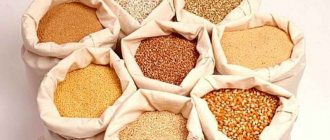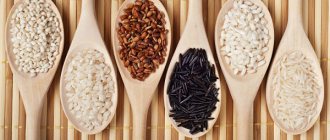Diabetes mellitus is such a common disease that there is hardly a person who has not heard of it or does not know that diabetes is manifested by elevated levels of sugar (glucose) in the blood. But not everyone suspects how dangerous it is. The fact is that diabetes has been the leading cause of death in the world for many decades. And every year the situation not only does not improve, but only gets worse. So, if you look at the report of the World Health Organization, the numbers are simply terrifying: between 2000 and 2021, mortality from diabetes increased by 70% and in 2021 amounted to 1.5 million people. That is, this is more than the new coronavirus infection claimed in a year. Moreover, 85% of these were patients with type 2 diabetes mellitus. But many people take this disease as an almost “normal condition” that does not require special attention. In fact, it is long-term neglect of diabetes that leads to such sad consequences.
Chicory
Treatment for diabetes is very long and tedious. Tired of endless medications and diets, patients try to find more effective methods and often turn to traditional medicine. Of course, in order to improve your well-being, any means are good. But such a serious disease does not tolerate self-indulgence, and any addition to traditional treatment and the recommended diet must be agreed upon with the attending physician.
Traditional medicine considers chicory to be one of the effective remedies that perfectly complements medical treatment and gives good results. So is chicory good for diabetes? This drink has proven to be very useful in cases of other serious diseases, but will it be effective in this case?
Gestational diabetes
Gestational diabetes is manifested by hyperglycemia with blood glucose levels that exceed normal values, but do not reach diagnostic values for making a diagnosis of diabetes. Gestational diabetes is diagnosed during pregnancy. Women with this diagnosis have an increased risk of complications during pregnancy and childbirth. They also have an increased risk of developing type 2 diabetes in the future. Most often, the diagnosis of gestational diabetes is made during prenatal screening; patients do not complain.
Decreased glucose tolerance and impaired fasting glycemia
Reduced glucose tolerance (PTH) and impaired fasting glucose (IFG) are intermediate conditions between normal and diabetes. People with PTH and IFN are at high risk of developing type 2 diabetes, but this may not happen.
Composition of chicory
The amazing properties of chicory have been known since ancient times. Therefore, this plant was widely used in practice by various herbalists. Even the healers of Ancient Egypt used chicory in their medicinal arsenal - a storehouse of various micro- and macroelements that are very valuable for the body, as well as a whole group of vitamins. It includes:
- inulin;
- tannins;
- choline;
- chicorin;
- organic acid;
- essential oil;
- a vitamin complex from such a set of vitamins A, B1, B2, C, PP;
- sodium;
- phosphorus;
- manganese;
- iron;
- potassium and others.
Description of the plant
The herbaceous plant common chicory (lat. Cichorium intybus) is a perennial with a straight branched stem and beautiful blue flowers. The habitat covers the entire territory of the former Soviet Union. In pharmacognosy and the food industry, the stem, leaves, roots, flowers and seeds are used.
The root part contains up to 45% of the carbohydrate inulin, which is credited with healing properties in reducing sugar levels and normalizing carbohydrate metabolism.
In addition to this substance, chicory contains such useful substances as the bitter glucoside intibin, resin, sugar, protein substances, glucoside chicoryin, lactucin, lactucopicrin, vitamins A, C, E, B, PP, pectin and microelements (magnesium, potassium, sodium, and also iron).
Inulin in chicory: effects on the body
The main reason why chicory is indicated for type 2 diabetes is its inulin content. Its impact on the body of a diabetic patient is difficult to overestimate. Inulin performs many important functions:
- Helps reduce glucose in diabetics, which will allow insulin-dependent patients to reduce the amount of insulin they take.
- Frees the body from radionuclides and heavy metals.
- Helps strengthen bones, reducing the risk of fracture.
- Significantly improves immunity.
- Helps normalize carbohydrate and fat metabolism.
- Reduces appetite.
Interesting Facts
- The first mentions of the healing properties of chicory can be found in the treatises of the legendary ancient scientists (medics) Avicenna and Dioscorides.
- In Central Asia, small children are washed in a strong decoction of this plant to prevent overheating and sunstroke.
- The ash left over from burning chicory is mixed with sour cream to prepare a rub for eczema.
Why is this plant useful for type 2 diabetes?
Among other plants that help regulate glycemia, chicory has been very successful for type 2 diabetes. Flowers and roots of the plant are used for treatment. They are used in the form of decoctions. In addition to the fact that chicory contains many useful substances and significantly reduces blood sugar, it also has diuretic and wound-healing properties, helps improve metabolism, strengthens blood vessels and stimulates improved cardiac activity in diabetes. But its use should be agreed with your doctor. Since this product has some contraindications, which must be known and taken into account when using chicory drinks.
Which chicory is better to choose?
On sale it comes in natural ground and soluble form as a powder or liquid extract.
The first contains more useful substances, the second is more convenient to use when preparing drinks. When purchasing, you should pay attention to the composition of the product, check for the presence of grains (rye, oats), acorns, etc. Additives have no practical benefit; they are used to reduce the cost of goods.
You should choose packaging with 100% medicinal plant content.
Soluble
This chicory comes in the form of powder, packaged in plastic bags, and liquid extract in jars.
The second contains a higher concentration of nutrients. It is prepared using a special root processing technology. It is dried, boiled, a base concentrate is obtained, from which a powder is subsequently made, or left in liquid form.
Upon visual inspection, the powder looks uniform, without lumps. It is hermetically packaged, because... When water gets in, lumps form and the product becomes unfit for consumption.
Instant chicory has a rich, bitter taste.
In liquid form, chicory is a thick extract of dark brown color with a rich bitter taste. It is packaged in glass jars, which are then stored at room temperature.
Ground
This chicory is obtained by drying, roasting the roots of the plant, and grinding them. Unlike instant, it has a strong aroma and contains a higher concentration of nutrients. Production technology allows us to preserve most of them unchanged.
Contraindications to drinking chicory drink
So, can you drink chicory if you have diabetes? The elements, vitamins and minerals contained in the named plant affect not only the causes of the pathology, but also other organs that this condition can harm.
If you decide to try a chicory drink as an aid to diabetes, consult your clinic about its effect on your body, especially if you have diseases such as:
- allergy to substances contained in chicory;
- respiratory diseases;
- problems with the gastrointestinal tract;
- varicose veins;
- renal or liver failure;
- chronic hemorrhoids.
Therefore, it is very important to learn about your body's reaction to chicory before you start consuming it. In general, other than the patient’s individual intolerance to any substances, there are no clear contraindications to the use of this remedy, and chicory is not prohibited for type 2 diabetes mellitus. The whole question is to do this not uncontrollably, but under the supervision of a qualified specialist.
Harm and contraindications
Chicory should not be taken if allergic reactions occur in the form of itching, redness, etc.
If you have low blood pressure, you should use it carefully and little by little, because some substances contained in the root have a vasodilating effect. Even 1-2 cups of the drink can cause nausea, weakness, and dizziness.
Chicory is contraindicated for:
- stomach ulcer, gastritis;
- varicose veins;
- hemorrhoids;
- kidney diseases.
Benefit
Most people are familiar with chicory as a healthy coffee substitute, because it also has a dark color and a bitter taste. It is drunk by everyone who is concerned about their health and proper nutrition. The root of this plant is most prized, but its other parts: leaves, flowers and stems can also provide good results.
Back in the 18th century, gardener Tamme prepared the first drink from chicory roots. And since then, many people have fallen in love with its tart taste, which is softer and more delicate than coffee, and much more beneficial for the body. Its beauty is that it can be drunk by children, the elderly, and pregnant or nursing mothers.
Why is chicory so beneficial for type 2 diabetes? What is the effect of its beneficial properties on the causes of diabetes? It is not without reason that they resort to the help of this plant when treating pathology. And the secret here is simple - chicory root contains fructose, which can replace sugar. And this allows you to reduce its level in the patient’s blood.
Inulin is also of great importance, creating a hypoglycemic effect in diabetic patients. It is able to have an excellent effect on reducing blood sugar, makes it possible to track glycemia and maintain sugar at a normal level, preventing its hyperglycemic surges.
Nutrition for type 2 diabetes and excess body weight
The use of any medications for type 2 diabetes mellitus still cannot fully compensate for the effect of poor nutrition on blood glucose levels. Proper nutrition is a critical component of effective treatment for type 2 diabetes and will help you achieve your blood glucose goals. Dietary approaches for people with type 2 diabetes, who may or may not be overweight, have hypertension, etc., will vary somewhat. The vast majority of people with excess body weight due to type 2 diabetes mellitus. Excess weight prevents your own insulin from working effectively, causing your blood glucose levels to remain high. Therefore, weight loss is an indispensable condition for rational treatment! Even moderate weight loss (5-10%) improves carbohydrate metabolism, especially in the early period of the disease. How to achieve weight loss? It should be immediately noted that there are no specific products or medicinal plants for weight loss. There are currently no medications that, on their own, without following a diet, could provide highly effective and completely safe weight loss.
The only reliable way is to limit the intake of energy into the body (it is indicated in calories), i.e. compliance with the rules of low-calorie nutrition . The resulting energy deficit leads to the fact that energy reserves “conserved” in adipose tissue will be spent on various needs of the body, and weight will certainly decrease.
The carriers of energy in food are its three components: proteins, fats and carbohydrates . The most high-calorie of them are fats, they contain 9 kcal in 1 gram; in proteins and carbohydrates - 4 kcal per gram. The most effective way to reduce caloric intake is to reduce the fat content in it. This is not only safe, but also useful for modern people, since our diet, unfortunately, is oversaturated with fats. Compared to fats, the calorie content of proteins and carbohydrates can be considered moderate, however, in order to achieve a good effect in weight loss, they still need to be slightly limited. There are a number of foods that do not need to be limited when losing weight. On the contrary, it is these products that can compensate for the above restrictions and replenish the reduced amount of food. This group of foods consists mainly of vegetables, which are poor in nutrients but rich in water, as well as plant fibers , which are not digestible. Plant fibers bring many benefits to the body: improve intestinal function, help the absorption of vitamins, have a beneficial effect on fat metabolism, etc. There are three groups of foods that need to be consumed differently in order to lose weight. Looking at these groups, you will definitely have an association with a traffic light.
- Limit as much as possible
High calorie foods: fatty foods, alcohol, sugar and confectionery
Examples: any butter, lard, sour cream, mayonnaise; cream, fatty cottage cheese and cheese; oily fish, poultry skin, canned meat; fish and vegetables in oil; fatty meat, smoked meats, sausages; sugar, sweet drinks, honey, preserves, jams, candies, cakes, cookies, chocolate, ice cream, nuts, seeds, alcoholic drinks.
- Limit moderately (eat half your usual serving)
Medium-calorie foods: protein, starchy, dairy products, fruits and berries.
Examples: milk and fermented milk products of regular fat content or low-fat/low-fat, cheeses less than 30% fat, cottage cheese less than 4% fat, eggs, lean meats, fish, pasta, bread and non-fat bakery products, cereals; fruits, potatoes, corn, ripe peas and beans.
- Use without restrictions
Products with minimal calorie content: vegetables (except for potatoes, corn, mature peas and beans), as well as low-calorie drinks.
Examples: radishes, radishes, beets, carrots, mushrooms, cucumbers, tomatoes, peppers, zucchini, eggplants, beans, young green peas, lettuce, greens, spinach, sorrel, any cabbage; tea, coffee without sugar and cream, mineral water.
Is it possible to maintain a low-calorie diet without counting calories? This is quite possible if you follow the principles of product selection outlined above. Moreover, experts have long recognized that what is important is not the number of calories that a person needs to consume (it is quite difficult to accurately indicate it for each person), but the amount by which a person has actually reduced his diet! An indicator of correct adherence to the principles of low-calorie nutrition will be the achievement of results: weight loss! If the weight does not decrease, this indicates that it has not yet been possible to significantly reduce the calorie content of the diet. How do different carbohydrates affect blood glucose levels?
Carbohydrates are the only nutrients that directly increase blood glucose, but this is not a reason to sharply limit them.
There should be enough carbohydrates in the diet of any person, including a person with diabetes (at least 50% of the total calories), since they are a source of energy for the body. Moreover, different carbohydrates have different effects on blood glucose levels. There are simple carbohydrates (they are called sugars), which are absorbed very easily because they consist of small molecules and are quickly absorbed in the digestive tract (within 10 minutes). They immediately and greatly increase blood glucose levels. It is these carbohydrates that make up sugar, honey, a lot of them are found in fruit juices (natural fruit also contains them, but due to the presence of fiber, the absorption of carbohydrates does not occur so quickly), and beer. Such carbohydrates are also found in liquid dairy products, but due to the fat content, carbohydrates are not absorbed so quickly. Another type of carbohydrates is complex (starches), they also increase blood glucose levels, but not as quickly and not as strongly as simple carbohydrates. Representatives of the following products: bread, cereals, pasta, potatoes, corn. The starch molecule is large, and the body has to work hard to absorb it. Therefore, the glucose formed as a result of the breakdown of starch is absorbed more slowly (after about 30 minutes), which increases its level in the blood to a lesser extent. Culinary processing of starchy foods (any grinding, prolonged heat exposure) helps to raise blood glucose levels. This means that a strong increase in blood glucose when consuming starches can be prevented by using certain food processing and preparation methods. For example, it is better to cook potatoes not in the form of mashed potatoes, but to boil them whole in their skins, so that they remain dense. It is also better not to cook porridge for too long. It is preferable to prepare them from large uncrushed grains (buckwheat, rice). Enriching food with plant fibers prevents increases in blood glucose levels. Therefore, it is better to buy grain or bran bread, and not from fine flour. Consume fruits and berries in their natural form, and not in the form of juices.
There are types of carbohydrate products - “free” , after which the level of glucose in the blood does not increase or increases only slightly. Such products include almost all types of vegetables in normal quantities (except potatoes). For example, cabbage, lettuce, parsley, dill, radishes, turnips, zucchini, eggplant, pumpkin, peppers, etc. Among the products of this group, the largest amount of carbohydrates is contained in beets and carrots, but the rise in blood glucose after them is not very large. Therefore, if you eat them in moderate quantities (as a side dish, no more than 200 g), they can also be ignored.
Do I need to count carbs? A person with type 2 diabetes mellitus, receiving tablets of glucose-lowering drugs or only following a diet, does not need to accurately count the amount of carbohydrates in food. Many people with diabetes have heard of so-called bread units. A system of such calculation exists for those who receive insulin. It correlates the amount of carbohydrates consumed with the doses of short-acting insulin that these people with diabetes take before meals. Special “diabetic” products Sweeteners allow you to give food a sweet taste without increasing blood glucose levels and without gaining weight. But in this case we are talking only about non-calorie sugar substitutes. These include aspartame, saccharin, cyclamate, acesulfame potassium, sucralose, stevioside. They do not affect blood glucose levels or weight at all. However, most “diabetic” products (cookies, chocolate, waffles) contain sorbitol, xylitol or fructose instead of sugar, which are almost as high in calories as sugar. Therefore, if you are overweight, they should be limited as much as possible, just like regular sweets. Fractional diet A fractional diet means eating multiple meals during the day (5-6 times, but still no more than every 2.5-3 hours) in small portions. This is helpful because eating a low-calorie diet can make you feel hungry. Eating more frequently will help reduce it. In addition, a small portion of food contains some carbohydrates, and this will facilitate the work of the pancreas. Alcohol Due to its high calorie content (7 kcal per 1 g), alcohol can contribute to weight gain. In addition, it directly worsens fat metabolism and blood pressure. Therefore, limit your alcohol intake as much as possible. Alcohol is known to have adverse effects on the liver. It can cause hypoglycemia if a person with diabetes is taking antihyperglycemic drugs and insulin. Under no circumstances should you drink alcoholic beverages on an empty stomach!
Types of processing
The main raw material for obtaining chicory product is the rhizome of the plant. It is dried and processed, and the production of one or another type of drink depends on the method of its processing. There are three in total:
- Concentrated liquid extract is a kind of extract from the rhizome of a plant, which is added in the manufacture of confectionery or in some sauces as a flavoring, and is also taken in a diluted state for insomnia and nervous stress.
- Dry ground - fried root is ground into powder and used for food, poured with hot or cold water, used to improve intestinal function and ensure normal functioning of the bile ducts.
- Soluble powder is the most complex in its production method, but also the most useful for diabetes. It is much more convenient than the first two, because it does not require infusion, and it can be stored much longer.
Regularly consuming chicory for diabetes can simultaneously reduce cholesterol levels.
Contraindications
Before using a healing drink, it is imperative to determine contraindications, which will eliminate the possibility of developing undesirable effects.
If the patient has diseases of the digestive system, then he should stop drinking the drink.
If the patient has nervous disorders, he is prohibited from taking chicory. It is not used in cases of nervous tension and stressful situations. Contraindications to the use of the drink are diseases of the cardiovascular system. If you have allergic reactions to the components of the culture, it is recommended not to use it. If during the course of the disease the sugar level is very low due to taking medications, then chicory is not used.
Chicory is recommended to be used only in the absence of contraindications, which will provide a positive effect on the human body in case of diabetes. The decision whether or not to use a product should only be made by a doctor.
Chicory during pregnancy and diabetes
To enhance existing healing agents, you can use various natural supplements. For example, everyone is interested in whether pregnant women or during lactation can drink chicory if they have diabetes? Of course you can, this drink with the addition of blueberries will be especially useful. Just don’t overuse daily doses to avoid harm.
Traditional medicine in the treatment of the described illness has never denied how useful chicory is for diabetes. Traditional methods of treatment with various plants still resonate in the medical community today. But these methods should not be used instead of drug therapy, but together with it, under the supervision of the attending physician and in therapeutic dosages, along with taking medications and strictly following a diet. Such interaction can bring good results and make treatment more effective and faster.
Recipes with chicory
Various types of drinks are prepared from the medicinal plant. They are consumed hot as an analogue of coffee or tea. Infusions and drugs are taken in doses according to the recommended treatment regimen.
Infusion
To prepare the infusion, 2 tsp. chopped root pour 1 tbsp. boiling water Let it cool completely. Then drink 1-2 sips at regular intervals throughout the day.
Chicory infusion is drunk in small doses throughout the day.
Medicinal drug
It is prepared from crushed leaves.
Pour 1 tbsp. water 1 tsp. product, boil for 15 minutes, leave for 40 minutes. The medicine can be taken for intestinal diseases. A paste of leaves is applied as a compress for inflammation of the skin and bruises. Ground chicory left over after drinking drinks is used to treat boils and boils.
Decoction
To prepare it, 1 tbsp.
crushed root, pour 200 ml of water, bring to a boil and cook for 5 minutes. Then infuse for another 30. The decoction has astringent, anti-inflammatory properties, and has a calming effect on the nervous system. It can be used as a mouth rinse for toothache and stomatitis.
Hot drink
Ground chicory is prepared in the same way as coffee. Put 2 tsp in the Turk. product, add 200-250 ml of water and bring to a boil. Leave for 3-4 minutes. Add sugar and cream to taste.
The hot drink is very reminiscent of coffee.
From soluble chicory in powder form you can prepare drinks with the addition of honey, cocoa, and milk. For this, 1-2 tsp. dilute in hot water, add ingredients to taste.
When preparing a hot drink from liquid chicory extract, it is enough to dilute 0.5-1 tsp. in 1 tbsp. boiling water You can add rosehip or blueberry syrup to it to increase the amount of vitamins.
Advice from endocrinologists
If you still doubt whether chicory is good for diabetes, consult your endocrinologist. Based on the test results, he will determine whether chicory will harm you and prescribe doses that are harmless to your body.
Recent studies have convinced doctors of the absolute benefits of chicory for the prevention of hypoglycemia. Therefore, this drink is recommended for patients with diabetes of any type. In addition, endocrinologists offer a number of useful tips for people with this diagnosis:
- Follow a strict diet, because the foods consumed directly affect the increase in blood glucose levels.
- Avoid stressful situations; with high nervous tension, the hormone cortisol is released into the blood, which helps increase blood glucose.
- Control your body weight, as excess weight reduces the effectiveness of insulin and makes the situation worse.
- Leading a more active lifestyle so that more glucose is spent on muscle work and less of it remains in the blood; physical exercise makes the body less dependent on insulin.
- Instead of sugar, use its artificial substitutes: aspartame and saccharin, which are lower in calories and do not lead to the accumulation of excess glucose in the blood, while its natural substitutes, xylitol and fructose, are very high in calories and can lead to hyperglycemia. You can treat yourself to diabetic confectionery products with artificial sugar substitutes from time to time.
- Take vitamin complexes designed specifically for diabetics.
So, we found out that you can drink chicory if you have diabetes. By following these tips and using the drink as a catalyst, it will be easier to make significant progress in the fight against diabetes and begin to live a simple, normal life as a healthy person.
Benefits of the drink
The liquid contains a lot of inulin, which benefits the body. In dried form, chicory is used as an excellent alternative to coffee drinks. The root improves taste and smell. You can eat roots or green petals. Breeders are working to create other varieties of the plant.
Chicory juice helps fight microbes, normalizes digestion, and has a positive effect on the central nervous system and blood supply. Diabetics get a lot of benefits from it. Green petals are used to make salads.










